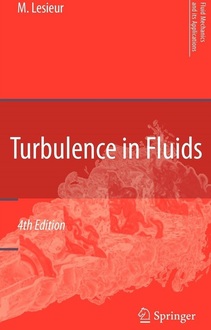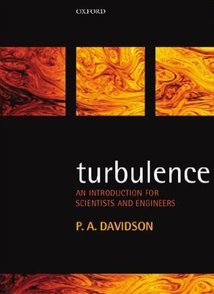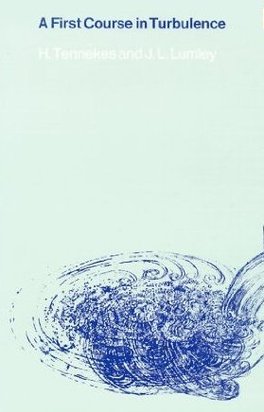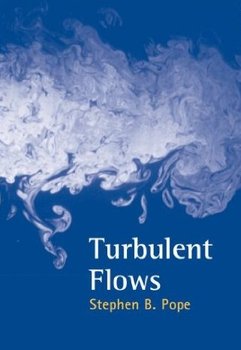Turbulence Book Reviews
Book 1
|
The book covers lots of encountered flow phenomena's especially in the field of atmospherical fluid dynamics, it gives examples on the power of computational fluid dynamics turbulence models in capturing the discussed phenomena's.
Chapter 1 gives the reader a simplified introduction to the field of turbulence. Chapter 2 this chapter covers the used equations and principles to solve computational fluid dynamics problems, such as the conservation of momentum, conservation of mass, ideal gas definition. The chapter will cover the equations but would not tell you the methods to solve these kinds of equations. Chapter 3 this chapter covers the transition of a flow from a laminar state to a turbulent state. The method to do so is through using mathematical tools to quantify the stability of the flow. Chapter 4 this chapter covers shear flows turbulence, when turbulence occurs shear flow occurs the magnitude and rate of the turbulence are related to how much energy is put into the flow. Jet flows are the first example always covered to study shear flows that is why the chapter covers several types of jet flows including channel flows with some extent to mathematical formulations. Chapter 5 this chapter covers the flow quantification parameters these are important at the data analysis stage of the project and turbulence model development. This is done through applying the homogenous turbulence case. The way to derive these kinds of analysis tools is through the use of Fourier space mathematical tools, therefore you need to refresh you vector calculus and computational PDEs modules. Chapter 6 this chapter covers isotropic turbulence phenomenology which represents a theory to solve turbulence models therefore coverage of the flow energy spectra using mathematical spectral tools is done by the author, the main purpose of using the energy spectra tools is to verify that the numerical simulation is giving the correct results for the studied problem from an engineering point of view. The majority of interested researchers about the energy spectral are the ones who work closely in turbulence models development this is where mathematicians, physicists and programmers come in. |
Chapter 7 this chapter cover some analytical tools to study turbulence with the coverage of stochastic models.
Chapter 8 This chapter talks about two dimensional turbulence, as it is known turbulence code development starts from a one dimensional case and processed to a two dimensional case. Chapter 9 This chapter focuses on three dimensional turbulence and its relation to geophysical application. Chapter 10 This chapter links the thermal side of a heart problem to solving the momentum and mass conservation equations, because heat is a contributing factor in lots of applications one of them is the geophysical side. Chapter 11 This chapter covers the use of probability tools on the Navier-Stokes equations to implement turbulence models Chapter 12 This chapter covers the use of filtering tools on the Navier-Stokes equations to implement turbulence models which leads to filter out unwanted eddies from the simulation which in turn reduces computational time cost which is an important factor to achieve project deadlines. Chapter 13 This chapter cover four examples about turbulence models. I hope that was helpful good luck |
Book 2
|
Many thanks to the Author. The way the author speaks to the reader through the written material in the book makes the reader enjoy reading the book and the simplified way the equations have been presented helps in attracting the reader's attention to read more about turbulence. This book is advisable for researchers working on turbulence models development, astrophysical and geophysical research projects. It can provide engineers with some introductory material on turbulence.
Part I The classical picture of turbulence Chapter 1 This chapter provides the reader with an introductory descriptive material about Turbulence and occasional life encounters. This chapter is easy and the reader should not go through much trouble in reading it. Chapter 2 This chapter covers the Navier-Stokes equations and dissects them into different and discuses each one and its impact on the flow properties. Engineering student would find some difficulty in reading this chapter because engineering students focus is mostly on the Bernoulli's equation due to its relation to the application side of things. Masters level and aerospace engineers won't find much difficulty in reading this chapter but won't be able to really get to the solving part of the equations. Mathematicians and physics research students can get through it because the majority have covered a module of computational PDEs. Therefore they would have an advantage over engineering students. Chapter 3 This chapter covers the origin and nature of turbulence through the use of some statistical tools that is done through some coverage of real life cases. Chapter 4 Turbulent shear flows and simple closure models, during the process of applying turbulence models to solve the Navier stokes a closure term to solve the equations is required. This chapter covers some of the encountered problems. The reader has to know that Turbulnce models are a variety of statistical and probability tools applied to the Navier Stokes equations in order to introduce new parameters that describe some physical phenomena. Chapter 5 The phenomenology of Taylor, Richardson, and Kolmogorov, this chapter has been given lots of attention due to the importance of the theory of the energy cascade , in other words showing how energy is transferred from large scales to small scale turbulence structures. Part II Freely decaying, homogenous turbulence |
Chapter 6
Isotropic turbulence (in real space) is covered where again this chapter covers the energy cascade theory simplifying the study by regarding the studied case as an isotropic turbulence case leading the reader to study the length scales dynamics and how different length scales interact between each other using different derived quantification parameters, some prior knowledge of probability, statistics and tensors is required in this chapter. Chapter 7 The role of numerical simulations, no way it is applicable to solve the Navier Stokes equations without the direct influence of computers to the process, therefore this chapter exposes the importance of computers in the advancement process of turbulence models. Chapter 8 Isotropic turbulence (in spectral space), Spectral space studies are always favoured by physicists and mathematicians due to their intensive use of spectral space to solve their problems while engineers would find some difficulty in understanding this chapter due to that they are unfamiliar with the use of spectral space tools. Part III Special Topics Chapter 9 The influence of rotation, stratification, and magnetic fields on turbulence this chapter is related to astrophysical application of turbulence. It takes into account the effects of electromagnetic fields on turbulence. Chapter 10 This chapter covers two dimensional turbulence which is something not avoidable after the reader has gone through the book , this introduces the reader to a more complex problem in turbulnce which introduces new factors to take into account. Praying for you not to encounter much turbulence while reading in this field, I hope that was helpful and good luck |
Book 3
|
It's a great book to start with in the field of Turbulence. Many thanks to the author.
I would recommended it for engineering discipline students who are working on problems relating to low speed aerodynamics or incompressible fluid flows. This book is mostly intended for post graduate students. The student must have a back ground in fluid mechanics because the material covered in the book assumes you have previous knowledge on Jets ,boundary layers , dimensionless numbers and most importantly the Navier-Stokes Equations. The book skims through some mass transport issues but the book is not intended for reactive flows. Derivations are presented in a simplified manner and get you to the required idea. An introduction to vortex dynamics is covered in chapter three. You can get through some chapters without any problems while other seem to be very strongly coupled with statistical mechanics methods. Basic statistics and probability knowledge is required including the need to refresh spectral methods info especially for the last three chapters. The first chapter is very well written and can give a quick introduction to turbulence. Chapter 4 Boundary Free Shear Flows is an introductory chapter but for more knowledge you can read through a book by Pope called Turbulent Flows or look for a book on Jet Flows. Chapter 5 Wall Bounded Shear Flows is an introductory chapter but for more knowledge you would have a look for a book called Boundary Layer Theory. |
The book covers several turbulence models starting from the very simple mixing length theory to the Reynolds Averaging method (RANS) Note that LES is not covered. Some times while reading the book like the wall bounded flows chapter you feel that some paragraphs don't give enough understanding to your questions due to them been cut down to much in information density. i hope that was helpful good luck |
Book 4
|
I would like to thank the author for this marvelous piece of work, intended for postgraduate students. It's very well written, simplified for the reader and provides lots of links to reference names if the reader wants to go in more detail. For a researcher who works in turbulent flows this book should be on his library shelf. This book is for non reactive flows, incompressible flows, if you want to go ahead and research in turbulent reactive flows then the book by Rodney Fox is maybe a good title to be added to your library shelf. You can rely on this book for validating and checking your experimental and numerical simulation tests. What is meant by that after making your measurement from your experiments you can compare you velocity profiles that you got by the velocity profiles provided in the book. The same applies for validating your Numerical simulation by checking that you got the right energy spectrum slope. The book provides a short description on DNS and Turbulent viscosity models, while LES and PDF models are covered with a generous description. The book has lots of exercises, it would be beneficial if the solutions for these exercise are available online. The book covers free share flows, scales of turbulent flows and wall flows. The first two are described in lots of detail the last is well written but a more through description can be found in the Boundary Layer Theory book by Schlichting .
Things that will be learnt from the book: 1-Turbulent flows are studied by studying flow patterns, the flow pattern is captured by knowing the velocity components at each measured point. Each flow problem has its own characteristic pattern, this leads to parameters that are vital to calculate for the studied case, example for jet flows is energy production and energy dissipation, for wall shear flows is the friction coefficient etc. |
2-The focus of the book on the length scale characterization for the studied flow is to specify by the researcher what is the role of the length scales are playing, are they dissipating the motion or are they producing the energy and what are their sizes which means that the researcher is lead to the energy cascade.
3-It covers and summarizers different turbulent flow models and illustrates their pros and cons. Focusing mostly on LES and PDF models. 4-The researcher is lead to know how to study and approach his studied case that he encounters during his work. Finally what I can say is as the Vatican has its own pope, turbulence has its pope. I hope that was help full. |
Unless otherwise noted, all content on this site is @Copyright by Ahmed Al Makky 2012-2013 - http://cfd2012.com



